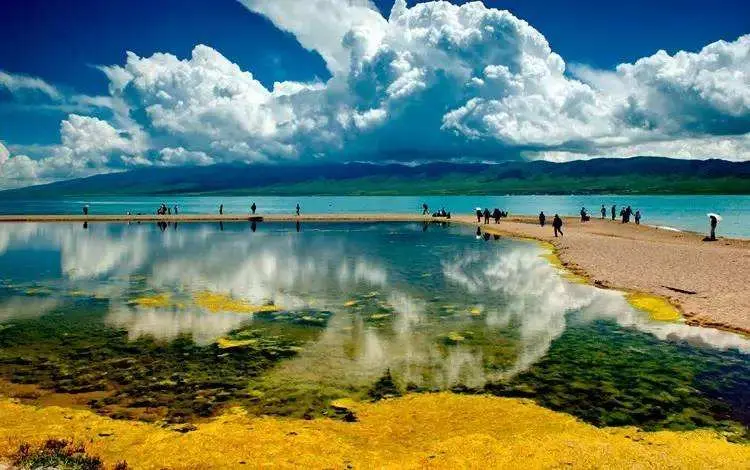Dadongshu Mountain Pass
Dadongshu Mountain Pass is at an altitude of 4120 meters. The vast alpine meadows stretch endlessly on both sides, and the winding roads twist and turn among the mountains. Distant peaks appear faintly under the mist, hinting at the enchanted forest ahead. There is a viewing platform here where you can stop to enjoy the scenery and take photos with the 4120-meter altitude marker.
Buha River
Before reaching Tianjun, you can first visit Buha River, the outpost of Qinghai Lake in the southeast of Tianjun. After entering National Highway 315, you can directly drive off the road and into the banks of Buha River. Buha River is the largest river in the Qinghai Lake basin and symbolizes the wild ox in Mongolian culture. The ever-flowing river water passes through mountains and crosses grasslands, continuously pouring into Qinghai Lake.
Er Lang Cave
Arrive at Tianjun County for a short rest, then head southwest to Er Lang Cave Scenic Area, which takes 35 minutes. This place was established by local Tibetans to commemorate the legendary Tibetan hero King Gesar. After passing through the gate, you can see the Temple of the Queen Mother of the West and the statue of Erlang Shen. You can freely visit the temple.
Before heading to Qinghai Lake, it is worth taking the G315 National Highway and Chade Expressway to visit the Chaka Salt Lake Scenic Area. As a newly popular tourist spot, on clear days, the lake surface can clearly reflect the sky and visitors, earning it the nickname 'Mirror of the Sky' alongside Bolivia's Uyuni Salt Flats in South America. The salt lake is nestled between Wanyan Tongbu Mountain and Wanggaxiu Mountain, where the reflection of the snow-capped mountains on the lake surface creates a unique highland scenery of water and snow. Walking deep into the salt lake, taking a selfie in the seamless blend of water and sky is an experience not to be missed. Taking the park's small train to the center of the lake offers a panoramic view of the salt lake scenic area.
Qinghai Lake
"Qinghai Lake, also known as 'Tso Ngombo,' is the largest saltwater lake and inland lake in China. It was formed by the fault collapse between Datong Mountain, Riyue Mountain, and Qinghai South Mountain, surrounded by mountains with incredibly picturesque scenery. Historically, it has been regarded as a sacred lake by various emperors, witnessing significant historical events such as the Tang-Tubo marriage alliance, battles, and trade exchanges. Every year on the 18th day of the seventh lunar month, a grand sea worship ceremony is held."
Qinghai Lake Erlangjian Scenic Area
Walk along the boardwalk extending into the lake within the scenic area, get up close to Qinghai Lake, and embrace this azure gift from the Qinghai-Tibet Plateau. Continue eastward, turn onto the East Lake Ring Road after 21 kilometers, and head north for 30 minutes to reach Sand Island. Unlike the previous two spots, the lakeside here features a sandy beach, with the surface covered in gravel, making it a breeding ground for local fish gulls. Besides the water activities at Erlangjian, you can also enjoy sand sliding, driving beach ATVs, and jeep surfing here. If you're lucky, you might even catch a traditional Tibetan wedding held by the local Tibetans.















